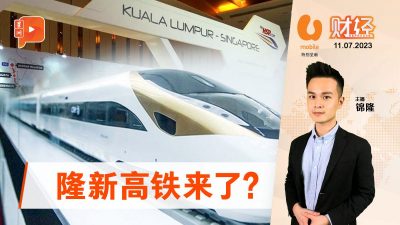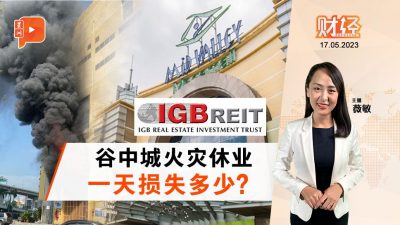Sin Chew Daily
Prime Minister Datuk Seri Ismail Sabri Yaakob has proposed to his Singapore counterpart to revive the KL-Singapore high speed rail negotiations, which Lee Hsien Loong says his country is open to.
Simply put, the issue can be studied, but conditions must be negotiated afresh.
Leaders of both countries agreed to build the HSR during their meeting in January 2013, with a bilateral agreement signed in 2016 for the project’s implementation. However, the project hit a snag when Pakatan Harapan took over the federal government in 2018, and had to be terminated due to lack of consensus over the details of the project’s implementation. Pursuant to that, Malaysia had to pay Singapore RM320 million in compensation.
According to then Singapore transport minister Ong Ye Kung, the two countries had vast differences over the transparent appointment of an assets company to oversee the project’s design, construction, operation and maintenance, and Singapore could not accept Malaysia’s decision to remove the assets company.
And we all know what the Malaysian government was up to. The word “transparent” alone was enough to kill the project!
Then minister in the PM’s department Mustapa Mohamed said the government would look into the possibility of building the railway on its own. entirely within the country.
Mahathir once said the project would involve an astronomical construction cost of RM100 billion, and this number should be revised after these few years.
Based on the construction cost of China’s HSR projects, the costliest section around the city of Chengdu costs RM126 million per kilometer, while the stretch between Beijing and Shanghai costs RM104 million per km. For the 350km KL-Singapore HSR, even RM60 billion is way too much!
 Will the HSR project deliver some economic spinoffs to the country? Not in the near future, but to be optimistic, it will definitely boost the nearly 400-acre Bandar Malaysia project which will serve as the site of the KL terminus.
Will the HSR project deliver some economic spinoffs to the country? Not in the near future, but to be optimistic, it will definitely boost the nearly 400-acre Bandar Malaysia project which will serve as the site of the KL terminus.
KLIA is too far from the city center, and if a one-way HSR ride from KL to Singapore takes not more than 100 minutes, it will eventually become the preferred mode of transport for travelers plying between the two cities, while boosting the development of cities and towns along its route.
More importantly, the implementation of the HSR project will bring lucrative investment potentials for relevant industries while creating massive job opportunities for Malaysians. Nevertheless, if the process is over-dependent on migrant workforce, the significance of this project will be remarkably compromised.
From the perspectives of the country’s macroeconomic development, it is utterly essential for the government to take the lead in investing in national infrastructural projects to stimulate the economic development, unless the new investments involved are bucking the global megatrends, such as building of coal-fired power stations and investing in traditional automobile manufacturing industry.
Keynesians are of the view that soaring unemployment and deflation will ensue in an economic recession, making it impossible for the government’s monetary policies to effectively stimulate economic recovery. As such, the government will have to expand fiscal expenditure to address the economic downturn.
While this may increase the budgetary deficit, new developments and job opportunities will be created once the infrastructural projects go on stream, hence sustained economic recovery and increased government tax revenue that will in turn resolve the issue of budgetary deficit.
With this mind, let’s keep our fingers crossed that the KL-Singapore HSR project can be rolled into action and not aborted halfway with another tranche of compensation paid to our neighbors down south.
ADVERTISEMENT
ADVERTISEMENT








































